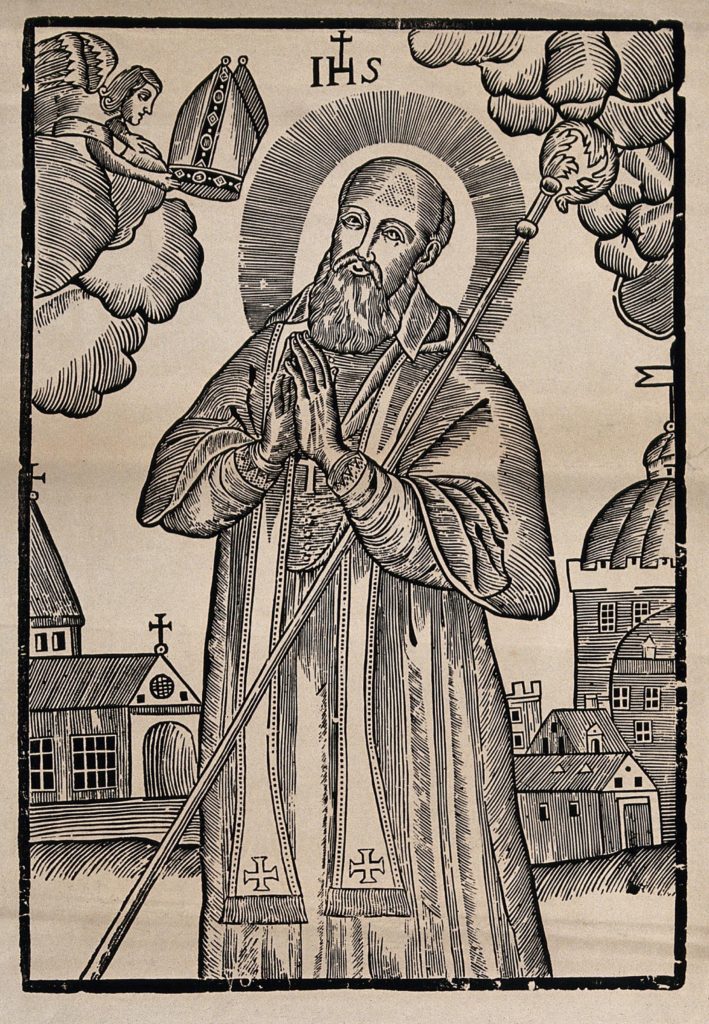The Beloved Bishop

Although St. Nicholas is probably the most popular saint in Christendom, long celebrated on December 6th and considered by many to be an integral part of the Advent season, there is not much credible information available on the details of his life.
What we do know for sure is that he was originally from Patara in Lycia, Asia Minor, and became the bishop of Myra sometime around AD 317. He was a well-known figure in the church at the time, with tradition stating that he attended the Council of Nicea in AD 325 and was a staunch critic of the heresiarch Arius.
It is said that his parents had long been childless and fervently prayed to God for a child before he was born. He later became an orphan. Nicholas was remembered to be extremely pious, and even at a young age he was well known for helping the oppressed and the poor.
There are numerous legends in circulation regarding Nicholas’s charity, kindness, and deep faith. One story recounts how on a pilgrimage to the Holy Land, a terrible storm overcame his ship, but by his prayers the vessel was kept safe, and the storm was miraculously calmed.
Another better-known account tells of Nicholas helping three daughters from a family so impoverished that the father was unable to provide a good dowry for them. The saint secretly went to their house one night, leaving three bags of gold in his wake and thereby preventing the women from being forced into prostitution. Over time, the gift of three bags of gold came to be depicted in Christian art as three gold balls, which also represented Nicholas’s love of the Trinity.
This story and the blessing that his birth must have been to his parents are just two of the reasons why Nicholas became associated with charitable giving and the love of children.

A Brief History
The lavish celebrations that we associate with St. Nicholas only began in the eleventh century with his addition to the Western calendar, which officially took place after the Great Schism. Following this separation a group of merchants from Bari, Italy, decided to steal the remains of Nicholas from Myra in the East, bringing his body to the West in 1087 and cementing his popularity among Western Christians. The shrine built to St. Nicholas at his new burial spot in Bari became one of medieval Europe’s greatest pilgrimage centers, and to this day the Basilica di San Nicola in Bari is well known among tourists and Christians alike.
Upon his inclusion in the Western church, his feast day quickly grew in popularity from the eleventh century up until the Middle Ages. Yet in the sixteenth century, many reformers (including Calvin and Zwingli) started to advocate for the complete erasure of December 6th celebrations, as they desired to completely distance themselves from the Roman Church and distance the celebration of Christmas from St. Nicholas.
Martin Luther disagreed, arguing for a more nuanced critique of St. Nicholas and simply wishing to transfer Europe’s love of Saint Nicholas to a better-placed love of the Christ child, Jesus. Depicting Jesus as the greatest gift-giver of all, Luther advocated for a reconceptualization of Nicholas’s traditions while still allowing the commemoration on December 6th to take place.
Collect

Grant, we beseech Thee, O Almìghty God: that the solemn feast of Blessed Nicholas, Thy Confessor and Bishop, may both increase our devotion and further our salvation through the reception of your grace; through Jesus Christ our Lord, who liveth and reigneth with Thee and the Hòly Ghost, ever one God, world without end. Amen.
Lessons
Epistle
Gospel
Resources
Issues, Etc. interview with Dr. Gene Edward Veith on St. Nicholas
Propers found in Daily Divine Service Book: A Lutheran Daily Missal, edited by the Rev. Heath Curtis
References:
1. Blackburn and Holford-Strevens. The Oxford Companion to the Year. Oxford. 1999.
2. Newland, Mary Reed. The Year and Our Children: Planning the Family Activities for the Church Year. Image Books. 1956.
3. Urlin, Ethel L. Festivals, Holy Days, and Saints’ Days. Simpkin, Marshall, Hamilton, Kent & Co., Ltd. 1915.
4. Weedon, William. Celebrating the Saints. Concordia Publishing House. 2016.
Images:
1. St. Nicholas, Unknown, 15th century, Italy.
2. St. Nicholas of Bari Banishing the Storm, Bicci di Lorenzo, ca. 1433-1435, Italy.
3. Saint Nicholas of Myra and Bari, William Brindley, Egland, 1881.



